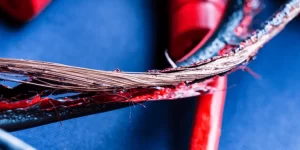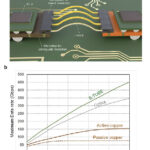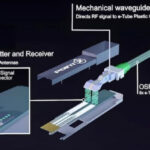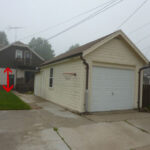Overheating of conductors is one of the most dangerous issues in any electrical system, potentially leading to insulation failure, equipment damage, or even electrical fires. Understanding what causes conductors to overheat is essential for ensuring safety, efficiency, and compliance with electrical codes.

what are common items that cause conductors to overheat
In this article, we’ll explore the most common items and conditions that cause conductors to overheat, especially in residential, commercial, and industrial electrical wiring.
1. Undersized Conductors
Using a wire gauge that’s too small for the current it carries is one of the most common causes of overheating. If the conductor's ampacity (current-carrying capacity) is exceeded, it generates excessive heat, which can quickly degrade the insulation and surrounding materials.
Example: Using 14 AWG wire on a 20-amp circuit
Solution: Always size wires according to the NEC ampacity tables and expected load.
2. Loose Electrical Connections
Loose connections at terminals, splices, or connectors can create resistance points. As current flows through these high-resistance points, it generates heat, often localized at the connection point—leading to conductor damage or fire hazards.
Common Locations:
Outlets and switches
Breaker panel terminals
Wire nuts or splices
3. Corroded or Oxidized Contacts
Corrosion on conductor surfaces or terminals—especially in aluminum wiring—can create a poor contact, increasing electrical resistance. This is a frequent issue in outdoor or high-humidity environments.
Preventative Tip: Use antioxidant compounds on aluminum wires and ensure connectors are rated for the conductor material.
4. Overloaded Circuits
Running too many devices on the same circuit can exceed the conductor’s designed load. Even if the breaker doesn’t trip, continuous overloading may cause long-term overheating.
Examples:
Plugging multiple high-wattage appliances into a single outlet
Overloading extension cords or power strips
5. Improper Cable Installation
When cables are bundled tightly or installed in areas with poor ventilation, heat cannot dissipate properly. This is especially true for MC cable, armored cable, and PVC-jacketed cables used in conduits or raceways.
Code Reminder: NEC 310.15(B)(3)(a) requires derating when multiple conductors are bundled together.
6. Damaged or Degraded Insulation
If insulation is nicked, cut, or deteriorated due to age or environmental exposure (e.g., UV rays, rodents, chemicals), the conductor may be exposed to air or contact other surfaces, increasing resistance and heat generation.
Common in:
Outdoor wiring
Industrial environments
Old residential wiring
7. Poor Quality or Substandard Cables
Low-grade conductors or cables that don’t meet international standards (e.g., UL, IEC, BS) may have poor conductivity, improper copper purity, or thin insulation—all of which can lead to overheating even under normal loads.
Buy from trusted suppliers who offer certified products like TOT Wire & Cable.
8. Harmonic Distortion and Power Quality Issues
In commercial or industrial settings, non-linear loads (such as VFDs, computers, or LED lighting) can cause harmonic currents that lead to overheating, especially in the neutral conductors of 3-phase systems.
Tip: Consider oversized neutrals or K-rated transformers for harmonic-rich environments.
Conclusion
Understanding and preventing the causes of conductor overheating is crucial for the safety and performance of any electrical installation. Always ensure proper conductor sizing, tight connections, and certified cable products to avoid unnecessary risks.
For high-quality copper and aluminum wire products—ranging from THHN, XHHW, MC Cable, Armored Cable to TPS and ABC Cables—TOT Wire & Cable delivers reliable, code-compliant solutions at competitive prices.
Need help selecting the right wire or cable? Contact us today for expert advice or a custom quote.





